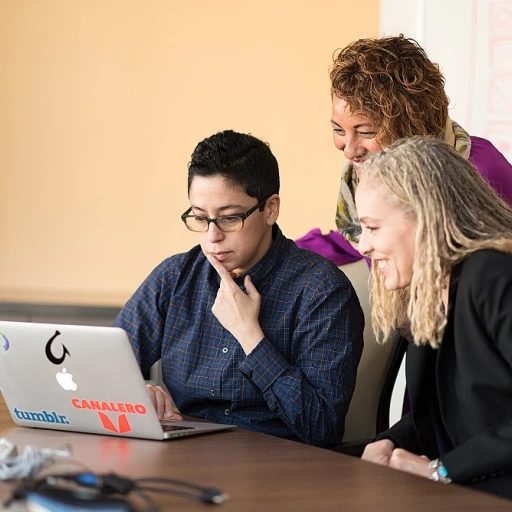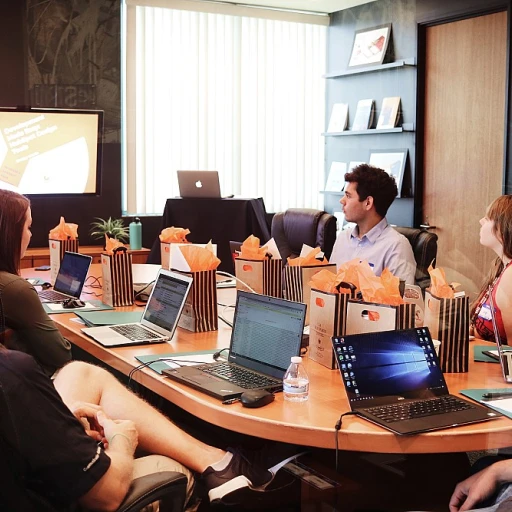
Understanding Extended Reality in Education
Exploring the Educational Landscape of Extended Reality
The realm of extended reality (XR) in education encompasses a variety of immersive technologies such as virtual reality (VR), augmented reality (AR), and mixed reality (MR). These technologies are revolutionizing the educational landscape by offering immersive learning experiences that engage students in ways traditional methods cannot. Educational institutions, from state universities to specialized training centers, are increasingly embracing these emerging technologies to enhance learning outcomes and provide real-time, immersive experiences that simulate real-world scenarios.
Extended reality provides educators with innovative solutions that can transcend the limitations of physical classrooms. It allows students to experience intricate digital worlds and situations, thus broadening their understanding and accessibility of different learning materials. Imagine students in medical education conducting virtual field trips to inaccessible areas or participating in interactive simulations that replicate complex medical procedures. Such experiences can significantly enhance their training and preparedness before stepping into real-world practice.
Despite their transformative potential, integrating XR into education comes with its challenges. Notably, there is a need for investment in these technologies, not just in terms of hardware but also in training educators to effectively use them. Furthermore, educational institutions must address issues related to health and safety when implementing XR in learning environments. Nevertheless, the opportunities presented by XR are immense, offering possibilities for enhanced student engagement, improved learning retention, and novel ways to experience educational content.
Accessing immersive learning solutions can sometimes be limited by resources and technological infrastructure, but with strategic planning, education institutions can create enriching extended reality experiences for learners. As this field continues to evolve, understanding and overcoming these challenges will be crucial in unlocking the full potential of XR in higher education.
The Role of Professional Learning Networks
The Power of Collaborative Networks
In the realm of higher education, the integration of professional learning networks plays a crucial role in the advancement and application of extended reality technologies. These networks serve as powerful conduits for educators, leaders, and students to share knowledge, experiences, and insights, ultimately leading to enhanced educational outcomes. By leveraging collaborative platforms, educational institutions can harness the collective expertise of their members to drive innovation in the use of virtual, augmented, and mixed reality technologies within their curricula.
Professional learning networks foster a sense of community and support among educators and leaders. Engaging with these networks provides opportunities to access real-time feedback, share educational solutions, and discuss the challenges and opportunities associated with immersive technologies. It also enables participants to stay up-to-date with the latest advancements and trends in the field, ensuring that their approaches to extended reality remain relevant and impactful.
These networks often help challenges such as integrating XR technologies into existing educational frameworks and addressing the health and safety concerns that come with immersive experiences. The collaborative nature of these networks allows for the pooling of resources and knowledge, paving the way for more comprehensive and effective training programs and learning experiences. By participating in these networks, universities and educators can create a supportive environment where diverse ideas and innovative approaches to teaching and learning can flourish, ultimately benefiting the students and the educational community as a whole.
Integrating XR into Leadership Development
Leveraging Virtual Strategies in Academic Leadership
Integrating Extended Reality (XR) into leadership development within higher education institutions can transform how educators and administrators approach leadership growth. XR, encompassing virtual reality, augmented reality, and mixed reality, allows for immersive learning experiences that can enhance existing training modules. Through these cutting-edge technologies, new dimensions of learning are explored, offering unprecedented opportunities to empower future leaders. Incorporating XR into higher education not only enhances leadership programs but also allows for diverse learning experiences. Educational institutions can utilize XR for virtual field trips, providing students with real-world experiences without leaving the campus. Immersive experiences made possible through XR can simulate complex scenarios faced by leaders in various sectors, including medical education and health safety, fostering better decision-making skills, and improved learning outcomes. A significant benefit of XR in leadership development is its capability to create collaborative virtual spaces. These environments enable real-time interactions between students, educators, and industry professionals, offering a platform for extended learning experiences. Such collaborative spaces can simulate real-world challenges, allowing emerging leaders to test various solutions in a safe, controlled setting. The digital nature of XR also ensures broader access to valuable resources, as educational content can be accessed by students and educators globally, broadening the reach and impact of leadership programs. Moreover, XR's potential to enhance immersive learning can be further realized through artificial intelligence-driven content. This integration tailors the learning experience, addressing unique needs and reinforcing educational outcomes by providing adaptive, real-time feedback. For those interested in exploring how extended reality can be part of an effective leadership development strategy, boost your leadership skills with online courses offering immersive technologies. Through such offerings, educators can extend their training capabilities and offer unparalleled experiences to students, reshaping leadership development for the modern world. The adoption of XR in leadership development is not without its challenges. There are notable opportunities and challenges to consider, including technological limitations, cost implications, and the necessity for ongoing training in advanced technologies. Education institutions must weigh these factors to effectively implement XR solutions that yield enhanced learning experiences and leadership competencies.Challenges and Opportunities
Challenges and Opportunities of Integrating Extended Reality in Higher Education
Universities and educational institutions face distinct challenges and opportunities when integrating extended reality (XR) technologies like virtual reality, augmented reality, and mixed reality into higher education. This landscape brings together digital educational experiences, creating an immersive learning environment that enhances traditional educational models. Navigating Technological Advancements With the rapid pace of technological advancements, education institutions must continuously update their systems to incorporate state-of-the-art immersive technologies. This presents a challenge, as maintaining and accessing the latest technology requires both financial investment and dedicated IT infrastructure to support these digital solutions. Moreover, educators must be prepared to adapt to these changes and develop curriculums that fully utilize the potential of XR. Improving Learning Outcomes Extended reality provides unique opportunities for students to engage in real-time, immersive experiences that enhance their learning outcomes. For example, in medical education, virtual reality can simulate complex surgeries, providing students with a risk-free environment to hone their skills. Similarly, virtual field trips can transport students to previously inaccessible global locations, allowing for diverse educational experiences. Developing Tailored Educational Content For extended reality to be effective, educational content must be carefully tailored to fit the medium. This involves creating immersive learning experiences that align with the curriculum and learning objectives. Educational institutions need to collaborate with content developers to design experiences that are not only engaging but also educationally valuable. Ensuring Health and Safety While XR technologies offer substantial benefits, there are also real concerns regarding health and safety. As students spend increased time in virtual environments, they must be guided on maintaining ergonomic practices to prevent physical strain. Similarly, safeguarding digital experiences involves ensuring that virtual spaces are secure and private. Building a Collaborative Ecosystem The integration of XR into higher education calls for a collaborative effort between educators, universities, and technology developers. By working collectively, these stakeholders can create immersive educational experiences that transcend traditional learning boundaries, ultimately leading to enriched training experiences for students. This collaboration fosters a network of knowledge and support, essential for overcoming implementation challenges and capitalizing on the opportunities that XR presents.Case Studies and Success Stories
Success through Real-World Examples and Experiences
Leveraging extended reality (XR) in higher education is not just theoretical; it is grounded in practical success stories and experiences that showcase its transformational potential. Here, we delve into examples that illustrate the path from aspiration to reality in integrating XR within educational settings.
One notable success story is from a state university that integrated virtual reality (VR) into its medical education curriculum. By employing immersive technologies, students could perform virtual field trips to real-time surgical procedures, allowing them to practice complex techniques in a low-risk environment. This led to improved learning outcomes and a deeper understanding of medical procedures without compromising health safety.
Another example involves an educational institution using augmented reality in its training programs for educators. This initiative provided educators with personalized digital feedback while teaching, thereby enriching the immersive learning experience. Faculty members accessed augmented reality to enhance learning experiences, facilitating real-time interaction with educational content. This approach not only optimized teaching methodologies but also positively influenced student engagement.
Mixed reality has been successfully deployed in higher education institutions to simulate challenging real-world scenarios. This approach allows students to experience immersive learning experiences, preparing them for situations they might encounter in their professional lives. The integration of artificial intelligence with immersive technologies has served as a real-world application of XR, pushing the boundaries of what traditional education can achieve.
These case studies reinforce the potential of XR to transform educational practices. They highlight the importance of employing modern technologies to create adaptive and responsive learning environments, ultimately preparing students for future challenges in the digital age.






